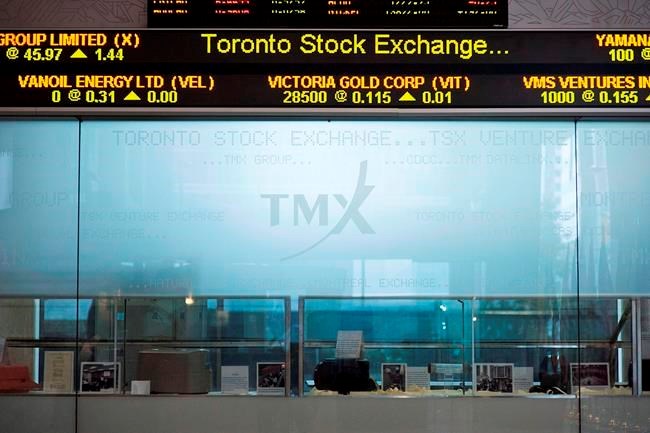TORONTO — Global stock markets fell in a broad-based decline as crude oil prices sank to their lowest level in more than two decades on heightened supply concerns.
After moving into unprecedented negative territory on Monday, the May oil contract turned positive on the last day to US$10.01 per barrel.
However, the more heavily traded June crude contract plunged more than 43 per cent or US$8.86 to US$11.57 per barrel.
"It's not good for the producers because during that roll forward, the June contract has fallen to about $10 to $11 per barrel and really no one's making money at those levels," said Craig Jerusalim, portfolio manager at CIBC Asset Management.
Oil contracts a few months out are in the $20 to $30 range but the longer that the spot price stays low the more production will be cut and not everyone will survive, he said.
"The cure for low prices is low prices, and it'll ultimately correct itself by supply coming off the market," he said in an interview.
"Ultimately, the price of oil should balance out where supply equals demand and where the marginal cost of production is, which is higher than where it is."
U.S. President Donald Trump tweeted that he's instructed the energy and treasury secretaries to "make funds available so that these very important companies and jobs will be secured long into the future!"
Jerusalim said that will allow unprofitable businesses to avoid bankruptcy.
"It might help that producer in the short term, it doesn't help the industry in the medium or long term."
The May natural gas contract was down 10.3 cents at US$1.82 mmBTU.
Despite the fall in prices, energy was the second-best performer among the 11 major sectors on the TSX.
It fell 1.2 per cent, just behind materials, which lost less than a percentage point on lower metals prices.
The June gold contract was down US$23.40 at US$1,687.80 an ounce and the May copper contract was down nearly nine cents at US$2.23 a pound.
Technology was the biggest loser on the day, falling 5.45 per cent as shares of Lightspeed POS Inc. dropped 9.2 per cent.
The heavyweight financials sector was down more than four per cent with Great-West Lifeco Inc. down 7.6 per cent and Canada's large banks losing between 3.5 and 4.5 per cent.
Efforts to flatten the curve in terms of confirmed cases of COVID-19 means the path back to normalization will be slow, corporate earnings are going to remain depressed and some companies won't survive.
"Bankruptcies are going to be elevated, consumers are not going to be able to pay their credit cards to the same extent as they were, which means provisions for credit losses are going to go up and overall profitability in many financials is going to be deteriorated for some time," Jerusalim said.
The S&P/TSX composite index closed down 448.22 points or 3.1 per cent at 13,940.06.
In New York, the Dow Jones industrial average was down 631.56 points at 23,018.88 for a two-day decrease of more than 1,200 points. The S&P 500 index was down 86.60 points at 2,736.56, while the Nasdaq composite was down 297.50 points at 8,263.23.
The Canadian dollar traded for 70.41 cents US, compared with an average of 70.99 cents US on Monday. Investors sought safety in the U.S. dollar which pushed it higher at the expense of the loonie and commodities.
Jerusalim said the positive news on the day was the human story as the global trend for virus infections in hot spots seems to have peaked, meaning the pace of growth has slowed.
"And that's beginning to change the dialogue to reopening.
This report by The Canadian Press was first published April 21, 2020.
Companies in this story: (TSX:GWO, TSX:LSPD, TSX:GSPTSE, TSX:CADUSD=X)
Ross Marowits, The Canadian Press




